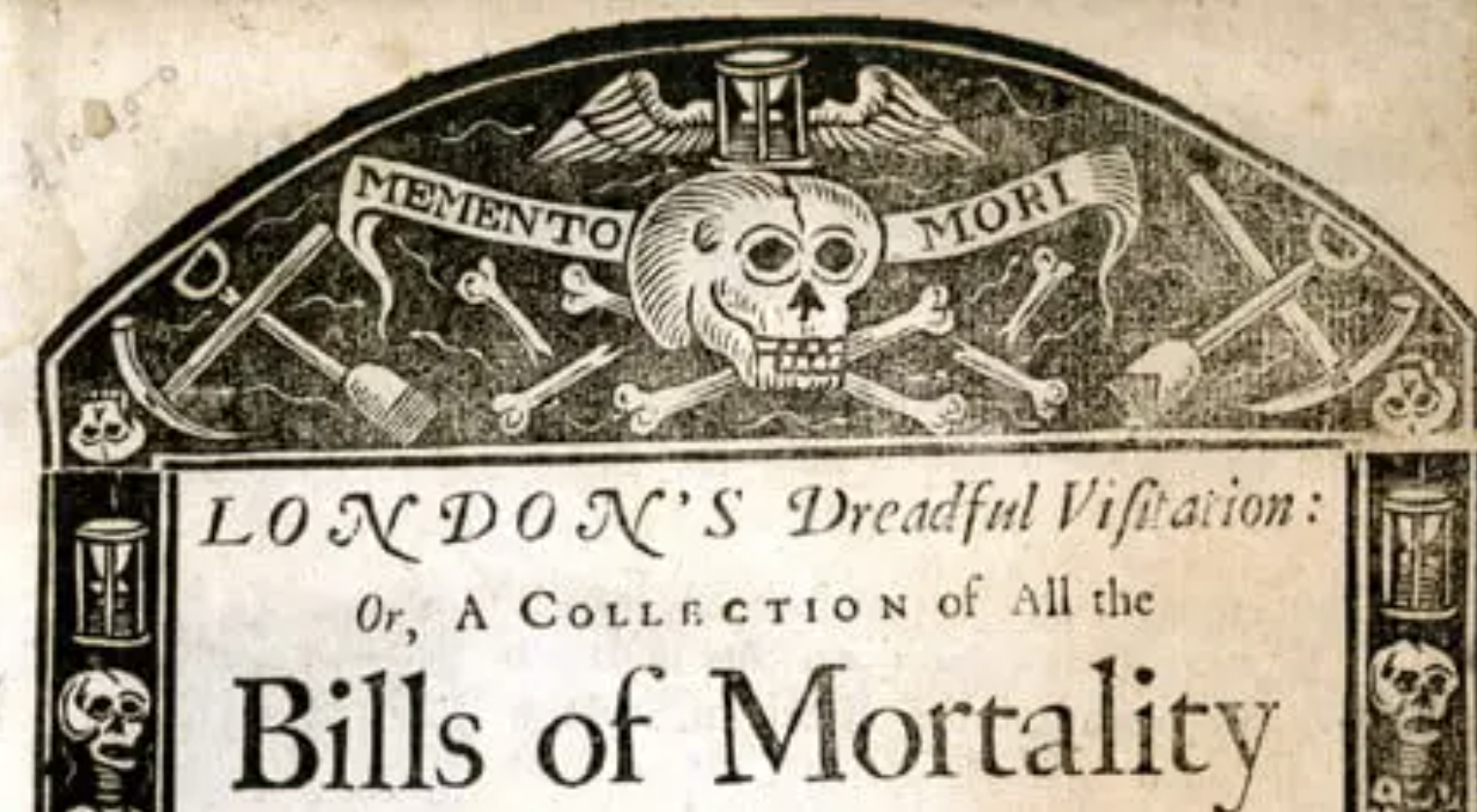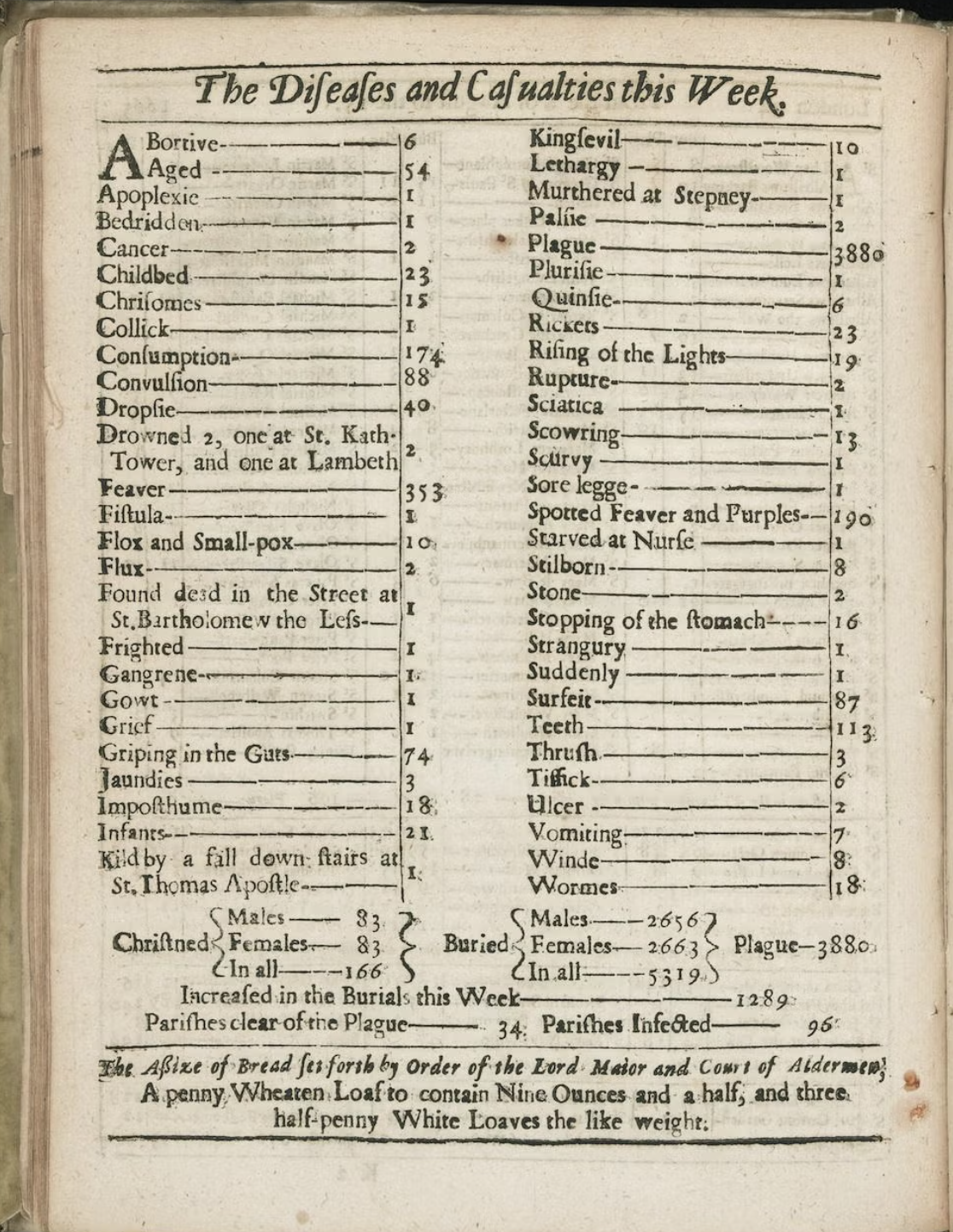
Many people might assume that, historically, reaching the age of 40 was rare. However, even in ancient times, individuals could live into what we now consider old age if they survived the perils of childhood and various life hazards. By the mid-17th century, as Europe left the Dark Ages behind and approached the Industrial Revolution, dangers like consumption, dropsy, “griping in the guts,” and the plague were common.
The London mortality bill below provides a glimpse into this era, specifically from the week of August 15-22, 1665, during which the plague spread to 96 of the 130 reporting city parishes.
Rebecca Onion from Slate highlights this document, also referenced by Neil MacGregor in Shakespeare’s Restless World. MacGregor notes these bills were affordable and widely disseminated. While medicine then was uncertain about death causes, the categorization in mortality bills—like “bedridden” or “lethargy”—was even vaguer.

Engage with history through 17th-Century Death Roulette, a dynamic web tool that simulates mortality bills by cycling through various causes of death recorded at the time. Whether “killed accidentally” or succumbing to “palsie,” this interactive experience offers a haunting snapshot of 17th-century life. While it won’t provide precise probabilities of death, it vividly captures the era’s stark realities.
Want to give it a try? Experience the human challenges of the past with a spin of the 17th-Century Death Roulette.
via Metafilter
Explore More:
Unveiling the History of Plague: A Chronological Journey Through Epidemics
A Glimpse into 1665: Advertisements Promoting “Famous and Effective” Plague Remedies
Peculiar Garbs of 17th Century Plague Doctors as They Battled the Bubonic Plague
Isaac Newton’s Revolutionary Discoveries Born During the Great Plague of 1665
The Various Fates in Shakespearean Drama: 74 Dramatic Deaths Visualized
Seoul-based writer Colin Marshall explores the realms of cities, language, and culture. Discover his newsletter Books on Cities and his book The Stateless City: A Walk through 21st-Century Los Angeles. Follow his insights on Twitter or join his community on Facebook.



